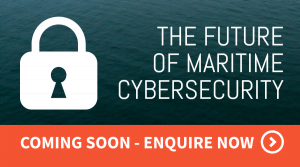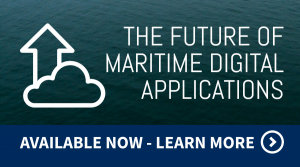When talk turns to AI and Smart Ports, articles are invariably discussing container terminals in western nations. The second busiest container port, Singapore, is also much mentioned.
The largest port or port megacity, Shanghai, is really several ports rolled into one and in 2019 it dealt with the equivalent of 43.5 million TEU (stacked lengthwise, enough to get two thirds of the way to the moon). In fact, Rotterdam is the only western port to get into the top ten and, except for Singapore and Busan in South Korea, all the others are in China.
Connected article – browse our list of the Top 14 Smart Terminal Port Companies in the world.
The future of unmanned technology
Like Australia’s Victoria International Terminal and the RWG Terminal at Rotterdam, Shanghai has become one of a small but growing number of international container-handling hubs to have completed the transition to unmanned technology. This is particularly evident in its deepwater container port, Yangshan, the fourth phase of which was opened in 2017.
Largely reliant on an industrial wireless network, there are hardly any people working in the container terminal area itself. Quayside container cranes are operated remotely or automatically. Trucks have been replaced by Automated Guided Vehicles (AGVs) which move to load, unload, and transport containers.
 When the current round of unmanned technology projects at Yangshan are complete, there will be 130 AGVs, 26 bridge cranes, and 120 rail-mounted gantry cranes all operated as smart devices. Operators will remotely control and supervise these, resulting in an improved operating environment and overall operational efficiency gains. Interestingly, the AGVs have self-fault diagnosis and self-power monitoring functionalities. Wireless communication with an automatic dispatching system allows the vehicles to move freely with precise positioning to complete the supervisory system’s instructions.
When the current round of unmanned technology projects at Yangshan are complete, there will be 130 AGVs, 26 bridge cranes, and 120 rail-mounted gantry cranes all operated as smart devices. Operators will remotely control and supervise these, resulting in an improved operating environment and overall operational efficiency gains. Interestingly, the AGVs have self-fault diagnosis and self-power monitoring functionalities. Wireless communication with an automatic dispatching system allows the vehicles to move freely with precise positioning to complete the supervisory system’s instructions.
Testing roadmap
Singapore has already tested automated harbour tugs and is being supplied digital twin technology for The Port of Singapore Authority, 32m TEU Pasir Panjang terminal and has also been commissioned for PSA’s giant 65m TEU Tuas Singapore development. In 2018, Pasir Panjang started trialling automated cranes and vehicles but a port operator still needs to use a joystick to load and unload containers onto the vessels and vehicles. Engineers are working to make the whole process automated, with only minimal human supervision needed.
At the Tuas Megaport project, scheduled to be finished in 2040, automation will occur on many levels. Cranes and cargo containers will include intelligent control systems and sustainable technology, as well as unmanned vehicles and automated yard cranes to improve port safety and efficiency and reduce traffic. Port waters will also be managed using digital systems and overall safety and security will be enhanced with interconnected systems technology.
Automated unloading and distribution is only a part of the facilities offered by a modern port. AI also needs to address labelling, storage, repackaging, distribution, security, health and safety, amenities supply (water, sewage, power and bunkering), documentation and mandatory regulatory compliance, access for specialist services, communication and more. Many of these are not easily automated while manned vessels still ply the oceans.
 Enabling technologies – Digital Twin
Enabling technologies – Digital Twin
It is expected that smart ports in tandem with smart ships will allow continued improvements in the workplace for all users of port services. This will rely on technologies such as the Internet of Things, Big Data, block-chain technologies, augmented reality, digital twins and other smart and data-science based interfaces.
A digital twin is a digital representation, or ‘twin’, of a physical object or system including all the components of that physical entity. For example, a port complex or terminal could be mapped into a 3D interface (a virtual model) and provide organised datasets for the user. Multiple data sources across a port are needed to achieve the full potential of the digital twin. It must be remembered, however, that a model is only as good as the variables included. Mishaps generally occur when something is overlooked or happens so rarely that its causation is discounted.
The digital twin takes in wide-ranging data. This includes Internet of Things sources including AIS information and cargo-hold from carriers, performance statistics and maintenance status of port tractors or carriers, and surveillance cameras. Real-time information is sent to operatives to action logistical and maintenance decisions. A digital twin can provide many benefits ranging from operational maintenance to predictive analysis for the port including risk assessment of future infrastructure developments and unusual cargoes. When coupled with machine learning, the digital twin offers a fantastic tool for larger ports to streamline operations.
Smaller ports can win too
Small and medium sized ports can also benefit from AI and smart technology and may be able to steal a march on their larger brethren. The tendency to build larger and larger box carriers would seem wise but, as the airline industry learned during the pandemic, there needs to be a certain size of market to maintain them. As the airline market is now reverting from wide-bodied planes which can carry more than 500 passengers to narrow-bodied planes carrying 200 or so passengers, it may be that the future optimum container vessels carry smaller loads with more efficiency and less energy consumption. These vessels would be able to offload and load at smaller, cheaper ports.
 Traffic at ports is broadly of two kinds – namely external and internal or intermodal. To be competitive, all ports need to allow both for desired efficiency. External is, of course, the ocean traffic related to the vessels venturing in and out for cargo loading and unloading. Internal is traffic related to trucks, trailers, trains, and local vans taking goods to and from the facility. Any delays have a knock-on effect. Of equal importance are security, quality control, health and safety and environmental impact which can be adequately modelled and predicted with the correct software.
Traffic at ports is broadly of two kinds – namely external and internal or intermodal. To be competitive, all ports need to allow both for desired efficiency. External is, of course, the ocean traffic related to the vessels venturing in and out for cargo loading and unloading. Internal is traffic related to trucks, trailers, trains, and local vans taking goods to and from the facility. Any delays have a knock-on effect. Of equal importance are security, quality control, health and safety and environmental impact which can be adequately modelled and predicted with the correct software.
As a vital link in the supply chain, the potential for increasing commercial activity is a distinct possibility. Distribution centres are invariably located within or adjacent to the port. This calls for a more intrinsic connectivity and communication at all levels for stakeholders. Within the infrastructure, communication systems based on integrated technologies serve a range of purposes. Sensors and feedback systems installed on equipment, quays, berths and bridges record and transmit real-time data of operations and health of the systems.
These structural-health monitoring systems are very economical in terms of ROI, where the cost of labour is high. As AI becomes more accessible to smaller users with everything from Radio Frequency Identification Readers (RFID) to Computer Vision Application (CVA) for identifying containers and cargoes, the need to utilise big, congested ports diminishes.
Protection of data
One of the biggest issues for making ports smart is the protection of data. This not only raises cybersecurity problems, but also of commercial confidentiality. This is where blockchain comes in. In the entire workflow for its ecosystem, almost everything is data-driven for streamlining and optimising operations, for recording cargo flows and contract details, for quality and development measures, for monitoring energy usage, for increasing safety and addressing security threats.
Many ports are now equipped with data centres dedicated to storage, distribution, processing and managing all these real-time and record data. This facilitates traffic efficiency and cybersecurity improvements.
With more business and regulatory processes to be observed, consistency requires automation with greater interconnection amongst more stakeholders. Robotics, computerised algorithms for workflow, and computer-aided management of freight help. It also allows for some savings in outlays. Anybody who has spent time in a port at night knows the incredible amount of lighting that is needed. Automated operations do not require the same level of illumination.
Realising unmanned technology benefits
There are many other associated benefits of port smartening. These include automated access based on AI and Identification methods (e.g. biometrics), automated warnings and fully automated extinguisher systems during emergencies like fires, attacks or natural calamities as well as automatic systems for cleansing, maintenance, sewage, drainage and manpower hygiene.
Of course, none of this happens without investment. Most ports in the USA and in Europe are owned by local authorities which require revenue or public funding for large projects. However, a rising number of private companies, sometimes with state backing, have become owners and operators. It is worth looking at these companies’ attitude to smartening ports. This is perhaps why we are seeing much greater deployment of smart port technologies in Asia. Nonetheless, we are also seeing port terminals in the UK taking note.
Learn more
Connect with Valour Consultancy on LinkedIn for our latest insight on unmanned technology across the maritime sector. You can subscribe to our monthly email updates for recent developments across smart shipping.
Register interest
Valour Consultancy is interested to understand the level of interest in a syndicated report exploring the smart terminal port market. The potential study would aim to understand how carriers and other maritime are interacting with ports and what technologies are currently being used and could potentially be used in the future. In addition, we will identify the key players and how their business models and solutions are evolving to encompass new automation technologies and AI. To register your interest in this potential research report, please click here.








